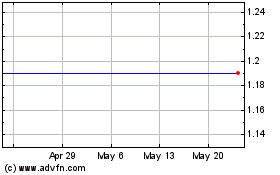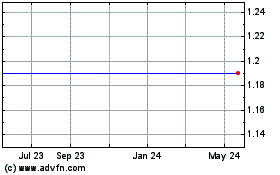Nastech Pharmaceutical Company Inc. Announces Scientific Advisory Board for MDRNA, Inc., its Wholly-Owned RNAi Subsidiary
March 07 2008 - 8:00AM
Business Wire
Nastech Pharmaceutical Company Inc. (Nasdaq: NSTK) announced today
the appointment of a Scientific Advisory Board (SAB) for MDRNA,
Inc., its wholly-owned subsidiary for the development of RNAi
technology and therapeutics. The SAB, initially comprised of three
noted scientists and clinicians, will provide critical scientific
and medical input on MDRNA�s strategic direction. �The formation of
such a strong Scientific Advisory Board speaks to our commitment to
the highest quality scientific, technological, and clinical effort
in the RNAi space,� stated Steven C. Quay, Chairman and CEO of
Nastech. �We are particularly pleased to have attracted such
prominent scientists, physicians and opinion leaders to our SAB.
Their experience, perspectives and insights will play an integral
role as we advance our technology and product candidates through
pre-clinical and clinical development. Additional members will be
added in the near term to augment the strengths of the SAB.� The
Scientific Advisory Board appointees include: Roger D. Kornberg,
Ph.D. Dr. Kornberg is a professor of structural biology and the
Mrs. George A. Winzer Professor in Medicine at the Stanford
University School of Medicine where his research is focused on
understanding the fundamental workings of gene regulation. Prof.
Kornberg was awarded the 2006 Nobel Prize in Chemistry for his
seminal studies of the molecular basis of eukaryotic transcription,
the biological process by which genetic information from DNA is
copied to RNA. From 1984 to 1992, Dr. Kornberg served as chair of
the Department of Structural Biology at Stanford. He is a member of
the National Academy of Sciences and a fellow of the American
Academy of Arts and Sciences. In addition to the Nobel Prize, Prof.
Kornberg has been honored for his work with the Eli Lilly Award,
the Passano Award, the Ciba-Drew Award, the Gairdner International
Award (shared with R. Roeder), the Hoppe-Seyler Lecture Award, the
Harvey Prize from the Technion (Israel Institute of Technology),
the ASBMB-Merck Award, the Pasarow Award in Cancer Research, the Le
Grand Prix Charles-Leopold Mayer, and the 2005 Alfred P. Sloan Jr.
Prize. Dr. Kornberg earned his Ph.D. in chemistry from Stanford
University. Following postdoctoral work at the MRC Laboratory of
Molecular Biology in Cambridge, England, he joined the scientific
staff there. He later became part of the faculty in the Department
of Biological Chemistry at Harvard Medical School and eventually
returned to Stanford as professor of structural biology. His recent
honors include the General Motors Cancer Research Foundation�s
Alfred P. Sloan Jr. Prize, the Pasarow Award in Cancer Research
from the Pasarow Foundation, and Le Grand Prix Charles-Leopold
Mayer from the Acad�mie des Sciences in France. He also is a
co-recipient of the Merck Award from the American Society for
Biochemistry and Molecular Biology. Dr. Kornberg is a member of the
National Academy of Sciences and a fellow of the American Academy
of Arts and Sciences. Carl Novina, M.D., Ph.D. Dr. Novina is an
Assistant Professor in the Department of Pathology at Harvard
Medical School, an Assistant Professor of Cancer Immunology/AIDS at
Dana-Farber Cancer Institute and an Associate member at the Broad
Institute. His research focuses on investigating the mechanisms and
applications of mammalian RNAi. To discover the biological roles of
microRNAs and their interacting proteins, his group has developed
cell-free, microRNA-dependent translational gene silencing
reactions and cell-based reporter systems for translational
repression and mRNA cleavage by microRNAs. His laboratory is
engaged in collaborative projects to profile microRNA expression as
well as microRNA and RNAi factor gene loci, in an effort to
understand the roles of microRNAs in cancer, including
hematopoietic and solid tumors. Dr. Novina received his M.D. from
Columbia University, College of Physicians and Surgeons in 2000 and
his Ph.D. from Tufts University, Sackler School of Graduate
Biomedical Sciences in 1998. He did his graduate studies on
transcriptional regulation of TATA-less promoters by TFII-I in Dr.
Ananda Roy�s laboratory. Dr. Novina did his postdoctoral training
in Dr. Phillip Sharp�s laboratory at Massachusetts Institute of
Technology investigating small RNA-directed gene silencing. James
E. Rothman, Ph.D. Professor James Rothman is the Clyde and Helen Wu
Professor of Chemical Biology and Director of Columbia University�s
Judith P. Sulzberger, MD Genome Center. He is renowned for
discovering the molecular machinery responsible for transfer of
materials among compartments within cells. Dr. Rothman has received
numerous awards and honors in recognition of this work, including
the King Faisal International Prize for Science (1996), the
Gairdner Foundation International Award (1996), the Lounsbery Award
of the National Academy of Sciences (1997), the Heineken Foundation
Prize of the Netherlands Academy of Sciences (2000), the Louisa
Gross Horwitz prize of Columbia University (2002), and the Lasker
Award (2002). He is a member of the National Academy of Sciences
(1993) and its Institute of Medicine (1995), and is a Fellow of the
American Academy of Arts and Sciences (1994). Dr. Rothman received
his Ph.D. degree in biological chemistry from Harvard Medical
School in 1976. He also attended Harvard Medical School from 1971
to 1973. From 1976 to 1978, he completed a fellowship in the
Department of Biology at the Massachusetts Institute of Technology.
From 1978 to 1988, he was a Professor in the Department of
Biochemistry at Stanford University. Dr. Rothman was the E.R.
Squibb Professor of Molecular Biology at Princeton University
(1988-1991). Prior to coming to Columbia in 2004, Dr. Rothman
founded and chaired the Department of Cellular Biochemistry and
Biophysics at Memorial Sloan-Kettering Cancer Center which he
joined in 1991 as the Paul Marks Chair and where he also served as
Vice-Chairman of Sloan-Kettering. About RNA Interference (RNAi) RNA
interference, or RNAi, is a cellular mechanism that can be used to
turn off the production of a protein by using small interfering
RNAs (siRNAs). siRNAs are double-stranded RNA molecules that are
able to silence a gene in a sequence-specific manner by degradation
of the target messenger RNA. In the case of an siRNA directed
against influenza, the target is one or more genes that encode
proteins critical for viral replication. If siRNAs are successful
at turning off the production of such proteins, the spread of
infection would be prevented or slowed. Nastech's RNAi research and
development programs seek to develop safe and effective
therapeutics by identifying key protein targets, designing the
siRNA that will turn off the production of the targeted proteins,
and developing a formulation for the delivery of this potential new
class of therapeutics. About MDRNA, Inc. MDRNA, a company
developing innovative products based on RNA-based technologies, is
a wholly-owned subsidiary of Nastech. Discovery of the biological
process of RNA interference (RNAi) garnered the Nobel Prize in
Medicine in 2006, and holds tremendous potential as a basis for
human therapeutics. Nastech began work on RNAi in 2002 and has
assigned its intellectual property, as it relates to the
development of RNA-based therapeutics, to MDRNA in order to bring
greater focus on the development of RNA-based technologies and
enhance shareholder value arising from this exciting new field.
Additional information about MDRNA is available at
http://www.mdrnainc.com. About Nastech Nastech is a
biopharmaceutical company developing innovative products based on
proprietary molecular biology-based drug delivery technologies.
Nastech and our collaboration partners are developing products for
multiple therapeutic areas including osteoporosis, obesity,
diabetes, autism, respiratory diseases and inflammatory conditions.
Additional information about Nastech is available at
http://www.nastech.com. Nastech Forward-Looking Statements
Statements made in this press release may be forward-looking
statements within the meaning of Federal Securities laws that are
subject to certain risks and uncertainties and involve factors that
may cause actual results to differ materially from those projected
or suggested. Factors that could cause actual results to differ
materially from those in forward-looking statements include, but
are not limited to: (i) the ability of Nastech or a subsidiary to
obtain additional funding; (ii) the ability of Nastech or a
subsidiary to attract and/or maintain manufacturing, research,
development and commercialization partners; (iii) the ability of
Nastech, a subsidiary and/or a partner to successfully complete
product research and development, including preclinical and
clinical studies and commercialization; (iv) the ability of
Nastech, a subsidiary and/or a partner to obtain required
governmental approvals; and (v) the ability of Nastech, a
subsidiary and/or a partner to develop and commercialize products
that can compete favorably with those of competitors. Additional
factors that could cause actual results to differ materially from
those projected or suggested in any forward-looking statements are
contained in Nastech's most recent periodic reports on Form 10-K
and Form 10-Q that are filed with the Securities and Exchange
Commission. Nastech assumes no obligation to update and supplement
forward-looking statements because of subsequent events.
Nastech Pharmaceutical Company (MM) (NASDAQ:NSTK)
Historical Stock Chart
From Apr 2024 to May 2024

Nastech Pharmaceutical Company (MM) (NASDAQ:NSTK)
Historical Stock Chart
From May 2023 to May 2024
